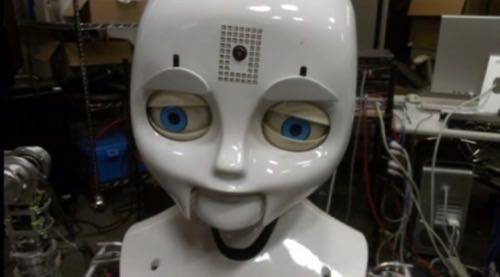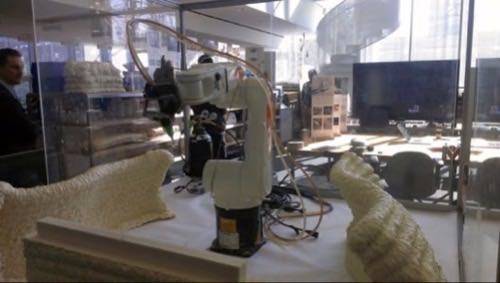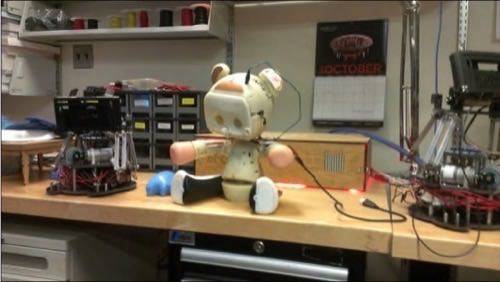
Epicenters of geekdom, where the future of technology are being built, exist in pockets across the United States. Yet, none drive the future quite like the geeks at the Media Lab at the Massachusetts Institute of Technology.
The Media Lab, powered by students and professors often working on sponsorships by large brands or government grants, delves deep into aspects of technology that promise to fundamentally change the future. From 3D printing to the future of optics, holographic imaging to socially aware robots, there is a little something for everybody at one of MIT’s most progressive research centers.

Yet, even in technology wonderland like the Media Lab, the innovation of the future is steeped in the building blocks of today. Robots, are powered by Android smartphones. Arduino processors for the do-it-yourself technologist are being built from textile materials, like fabric or paper. Cloud technology enables researchers to analyze large datasets with a speed and clarity never before available. Stereoscopic hologram images are built on the concepts like Pepper’s Ghost, developed in the 19th century. 3D image fields are being created by hacking Microsoft’s Kinect because they are cheap to acquire and implement.

Meet The Dragonbot
For instance, take the Dragonbot (pictured right). This fuzzy little guy is an attempt towards a “socially aware robot” and its entire system, including its eyes and face, are powered by Android smartphones. By using a smartphone, researchers can leverage various sensors inside the device, like the camera and the touch screen interface, the microphone and the cellular connection. The Dragonbot could have many different purposes, including helping children learn a second language or assisting autistic kids with their speech issues.
Imagine this scenario: you have a conversation with a Dragonbot in San Francisco (yes, you will be able to converse with these things eventually). It uses the camera in its smartphone brain to recognize your face and upload that recognition to a cloud server. You tell the Dragonbot something, perhaps that you are happy the San Francisco Giants are in the World Series. A month later you come to Boston and see a different Dragonbot. It can use its cellular connection to retrieve information from the cloud, recognize your face and ask about your feelings for how the Series turned out.
That would be one smart little robot.

Off-The-Shelf Components
Let’s dig a little deeper: What functions currently available off-the-shelf from commercial companies make this robot possible?
First, the smartphone and all the sensors and computing power that goes behind it. A quad-core smartphone is as powerful as the best laptop of 2000, not even including the sensors inside. The facial and speech recognition that the smartphone uses is available from companies like Google, Nuance and Facebook. The cellular connection that enables the Dragonbot to send and store information comes from the big mobile operators, like AT&T or Verizon. The cloud storage could come from any number of providers, such as Google, Apple, Oracle, Facebook or Amazon. Put all this together with the right algorithms and applications and you have the potential for an affordable robot with its own artificial intelligence that could provide distinct value to the world.

The Dragonbot is just one example. All over the MIT Media Lab, off-the-shelf commercial technology is being used to create on futuristic concepts that promise to revolutionize our lives. The impact of innovations like smartphones and pervasive cloud computing are seen everywhere in the Media Lab. They are the building blocks of the next generation of technology, available simply by logging onto the Internet or walking down to your local Best Buy.
Images by Dan Rowinski.





















